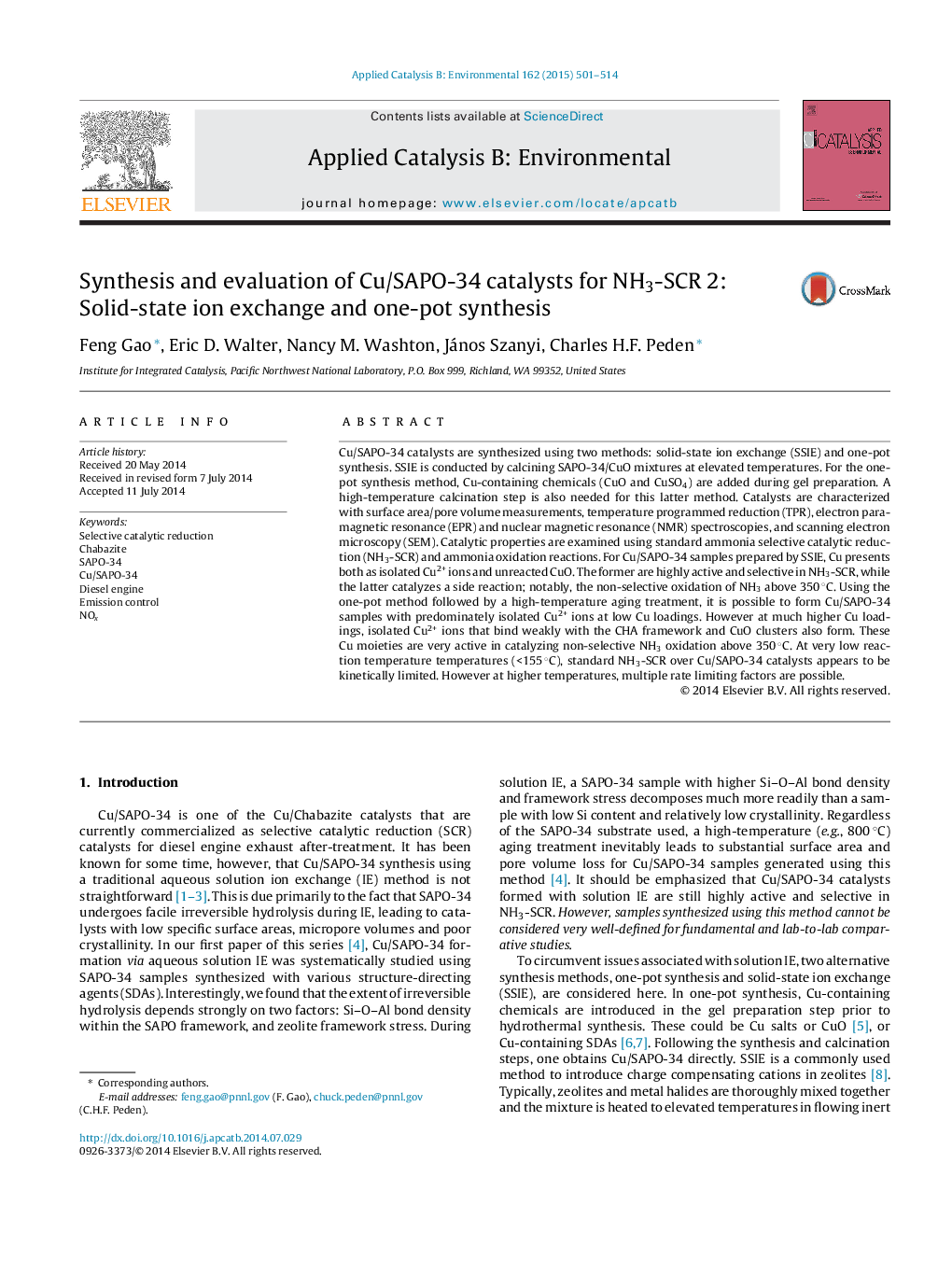| Article ID | Journal | Published Year | Pages | File Type |
|---|---|---|---|---|
| 45673 | Applied Catalysis B: Environmental | 2015 | 14 Pages |
•Cu/SAPO-34 catalysts are prepared by solid-state ion exchange and one-pot methods.•SSIE and ‘1-pot’ lead to better zeolite crystallinity than solution ion exchange.•All synthesis methods, including solution IE, give distribution of Cu species.•For preparation of model catalysts for fundamental studies, SSIE is recommended.
Cu/SAPO-34 catalysts are synthesized using two methods: solid-state ion exchange (SSIE) and one-pot synthesis. SSIE is conducted by calcining SAPO-34/CuO mixtures at elevated temperatures. For the one-pot synthesis method, Cu-containing chemicals (CuO and CuSO4) are added during gel preparation. A high-temperature calcination step is also needed for this latter method. Catalysts are characterized with surface area/pore volume measurements, temperature programmed reduction (TPR), electron paramagnetic resonance (EPR) and nuclear magnetic resonance (NMR) spectroscopies, and scanning electron microscopy (SEM). Catalytic properties are examined using standard ammonia selective catalytic reduction (NH3-SCR) and ammonia oxidation reactions. For Cu/SAPO-34 samples prepared by SSIE, Cu presents both as isolated Cu2+ ions and unreacted CuO. The former are highly active and selective in NH3-SCR, while the latter catalyzes a side reaction; notably, the non-selective oxidation of NH3 above 350 °C. Using the one-pot method followed by a high-temperature aging treatment, it is possible to form Cu/SAPO-34 samples with predominately isolated Cu2+ ions at low Cu loadings. However at much higher Cu loadings, isolated Cu2+ ions that bind weakly with the CHA framework and CuO clusters also form. These Cu moieties are very active in catalyzing non-selective NH3 oxidation above 350 °C. At very low reaction temperature temperatures (<155 °C), standard NH3-SCR over Cu/SAPO-34 catalysts appears to be kinetically limited. However at higher temperatures, multiple rate limiting factors are possible.
Graphical abstractFigure optionsDownload full-size imageDownload as PowerPoint slide
